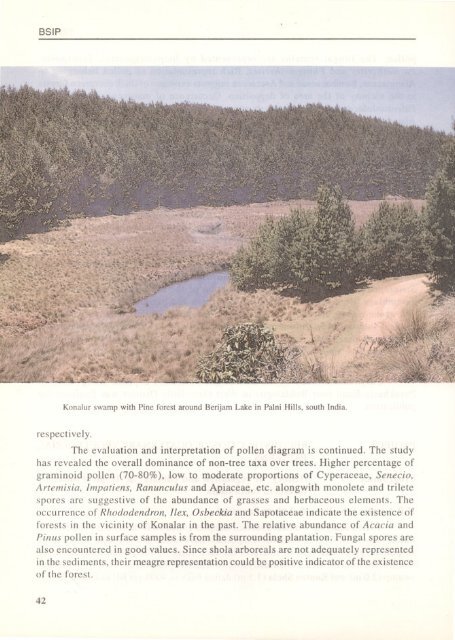1996-97 - Birbal Sahni Institute of Palaeobotany
1996-97 - Birbal Sahni Institute of Palaeobotany
1996-97 - Birbal Sahni Institute of Palaeobotany
Create successful ePaper yourself
Turn your PDF publications into a flip-book with our unique Google optimized e-Paper software.
BSIP<br />
Konalur swamp with Pine forest around Berijam Lake in Palni Hills, south India.<br />
respect ivel y.<br />
The evaluation and interpretation <strong>of</strong> pollen diagram is continued. The study<br />
has revealed the overall dominance <strong>of</strong> non-tree taxa over trees. Higher percentage <strong>of</strong><br />
graminoid pollen (70-80%), low to moderate proportions <strong>of</strong> Cyperaceae, Senecio,<br />
Artemisia, Impatiens, RanuncuLus and Apiaceae, etc. alongwith monolete and trilete<br />
spores are suggestive <strong>of</strong> the abundance <strong>of</strong> grasses and herbaceous elements. The<br />
occurrence <strong>of</strong> Rhododendron, J1ex, Osbeckia and Sapotaceae indicate the existence <strong>of</strong><br />
forests in the vicinity <strong>of</strong> Konalar in the past. The relative abundance <strong>of</strong> Acacia and<br />
Pinus pollen in surface samples is from the surrounding plantation. Fungal spores are<br />
also encountered in good values. Since shola arboreals are not adequately represented<br />
in the sediments, their meagre representation could be positive indicator <strong>of</strong> the existence<br />
<strong>of</strong> the forest.<br />
42

















